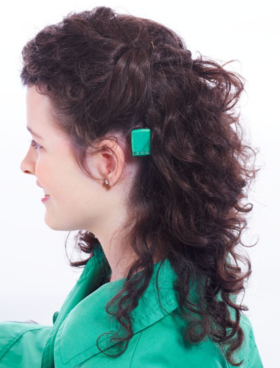Bone anchored hearing aid
| Bone-anchored hearing aid | |
|---|---|
| Intervention | |

A hearing-aid user with a sound processor attached behind her ear
|
A bone-anchored hearing aid (BAHA) or bone-anchored hearing device, is a type of hearing aid based on bone conduction. It is primarily suited for people who have conductive hearing losses, unilateral hearing loss, single-sided deafness and people with mixed hearing losses who cannot otherwise wear 'in the ear' or 'behind the ear' hearing aids. They are more expensive than conventional hearing aids, and their placement involves invasive surgery which carries a risk of complications, although when complications do occur, they are usually minor.
Two of the causes of hearing loss are lack of function in the inner ear (cochlea) and when the sound has problems in reaching the nerve cells of the inner ear. Example of the first include age-related hearing loss and hearing loss due to noise exposure. A patient born without external ear canals is an example of the latter for which a conventional hearing aid with a mould in the ear canal opening would not be effective. Some with this condition have normal inner ear function, as the external ear canal and the inner ear are developed at different stages during pregnancy With normal inner anatomy, sound conducted by the skull bone improves hearing.
A vibrator with a steel spring over the head or in heavy frames of eyeglasses pressed towards the bone behind the ear has been used to bring sound to the inner ear. This has, however, several disadvantages, such as discomfort and pain due to the pressure needed. The sound quality is also impaired as much of the sound energy is lost in the soft tissue over the skull bone, particularly for the higher sound frequencies important for speech understanding in noise.
Bone-anchored hearing aids use a surgically implanted abutment to transmit sound by direct conduction through bone to the inner ear, bypassing the external auditory canal and middle ear. A titanium prosthesis is surgically embedded into the skull with a small abutment exposed outside the skin. A sound processor sits on this abutment and transmits sound vibrations to the titanium implant. The implant vibrates the skull and inner ear, which stimulate the nerve fibers of the inner ear, allowing hearing.
...
Wikipedia
